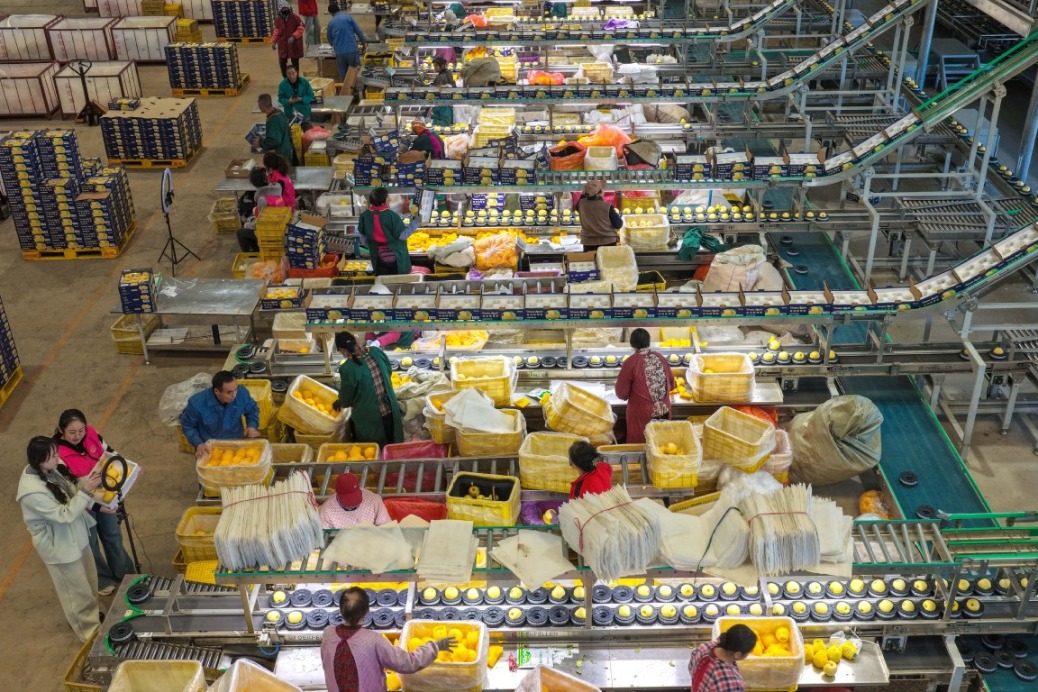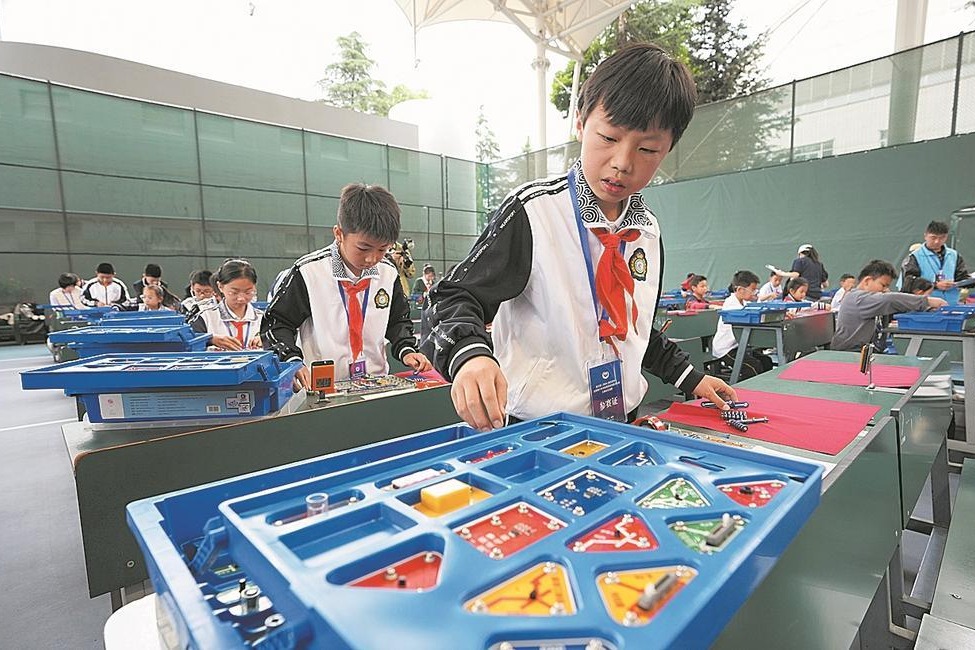The End Of A Retail Icon

The impending closure of the Pacifi c Department Store on Huaihai Road spells tough times ahead for similar business, but industry experts believe brick-and-mortar operations can still survive and even thrive if they get their strategy right
While the Mid-Autumn Festival is a time of reunion for Chinese families, it was unfortunately also the occasion during which the Pacifi c Department Store confirmed its imminent departure from Huaihai Road,one of Shanghai's shopping hotspots.
The department stall has been around since 19 years ago when Taiwan's Far Eastern Group fi rst introduced it to the mainland market. Once a well-loved and iconic shopping destination among the locals,the department store - it first opened in September 1997 - has in the past decade suff ered from the competition posed by e-commerce competitors and the proliferation of shopping malls.
According to Wu Bin, a staff from the marketing division of Pacific Department Store's Shanghai head offi ce, clearance sales featuring signifi cant discounts have already begun and will last till mid-October. Wu also revealed that the main reason for the store's closure is the soaring rental prices in the city.
"The new rental rate is about 30 times higher than what we paid two decades ago," said Wu.
"The lease contract will expire in 2017 and the store will be closed by the end of the year, or at the very latest, in early 2017.This closure will not aff ect the operations of our other two stores in Shanghai."
It is still unclear what will happen to the space vacated by Pacific Department Store,though rumors have been rife that China Xintiandi, the property owner of the department store, is planning to operate the retail space on their own.
"Winter" has arrived
Shi Lei, a salesperson of an Italian footwear brand who divides her time between the outlet at Pacific Department Store and the one at Parkson Department Store on Huaihai Road, said that business at the latter has actually been worse.
Fan Hongjuan, retail senior director of CBRE eastern China advisory and transaction services,said that Chinese department stores have entered "a winter season in business".
Based on the fi ndings by the China Commerce Association for General Merchandise, while China's 80 major department stores experienced a 9.3 percent rise in revenue last year, their profits actually tumbled 19.53 percent year-on-year.
Furthermore, 114 department stores across the country had shuttered last year, including big-name brands such as Marks & Spencer, Parkson and Beijing Wangfujing Department Store,according to ThePaper.cn.
"Unlike the business models of department stores in overseas markets, where the store itself is a buyer and provider of a variety of goods, China's department stores operate like landlords who rent their space to brand retailers. Each brand then operates its own business independently,which means the in-store shopping experience is greatly varied," explained Fan about the possible factors behind thisphenomenon.
Ben Cavender, principal of China Market Research Group (CMR), said that department stores are no longer the choice shopping destination because Chinese consumers have become more discerning with their purchases. He explained that consumers today would rather turn to major e-commerce sites which can off er great discounts and delivery services, or shopping malls where they can dine and be entertained instead of just shop, or even brand boutiques where the shopping experience is perceived to be better and more personalized.
Of the 10.5 trillion yuan ($1.57 trillion)worth of e-commerce trading in China that was recorded between January and June this year - a 37.6 percent year-on-year increase - online retail channels contributed to some 2.3 trillion yuan, according to a report from China E-commerce Research Center.
Qi Xiaozhai, director of the Shanghai Commercial Economic Research Center, shared that back in the 1990s, the shops on Huaihai Road where Pacifi cDepartment Store is located,only had to compete with those on Nanjing Road, Sichuan Road and Yu Garden. Today, competitors can be found along more than 50 retail streets, a dozen commercial centers in diff erent districts, as well as over 20 community shopping destinations in the downtown area.
Another reason for the demise of department stores, Qi said,is the slower annual economic growth in China which has eroded the spending powers of consumers.
Keeping up with the times
The departure of the Pacifi cDepartment Store has also been deemed as a blow to Huaihai Road's reputation as a shopping and fashion destination in the city.
Huaihai Road has three sections - East Huaihai Road,Middle Huaihai Road and West Huaihai Road - and only the 2.2-kilometer central area is regarded by locals as the high-end shopping destination that can rival Paris' Les champs-Elysees or New York's Fifth Avenue.
"Huaihai Road is currently carrying out a slew of repositioning measures to increase consumer traffic and capture sales. For example, the Louis Vuitton store will be replaced by Victoria's Secret's lingerie store in China. Other brands like Muji and Uniqlo have also taken overold-fashioned department stores with their fl agship outlets to woo young consumers," said Fan.
The Central Plaza neighboring the Pacifi c also closed recently.In a statement to China Daily,Central Plaza's owner Sun Hung Kai Properties said that the mall will be undergoing renovations in order to add fresh elements to entice shoppers.
"We are constantly communicating with a variety of brands and trying to bring new concepts and retail flagship stores into the historic building,according to the high quality requirements of Huaihai Road,"read the statement.
Among the existing forms of physical retail choices, shopping malls that have a wide selection of specialty stores have proven to be the most popular among Chinese consumers, according to Yang Yuechen, director and head of research and consultancy at Knight Frank Shanghai.
In response, some Chinese developers that formerly only focused on the residential sector have been joining hands with foreign brands to develop shopping malls, with Wanda being one of the most successful examples. The group, which has adopted this approach since 2002, now owns 159 shopping malls in 111 cities across the nation.
Albert Lau, CEO of Savills China, said that retail businesses today need to establish a clear positioning in order to survive and thrive.
"The changing market conditions require retailers to adapt quickly. Department stores, for example, should upgrade their brand management, offer an integrated and seamless shopping service and channel more focus to providing good in-store experiences," added Lau.
Other experts said that foreign retailers such as Uniqlo,H&M, Zara and Muji have done a good job in creating distinct brand identities through their product designs and the speed at which they iterate new products.
Cavender pointed to how Uniqlo has created flagship retail stores that are comfortable to shop in and showcase new products that consumers could choose to purchase online. He also praised Muji and Zara for offering home furnishing options that appeal to young white collar consumers looking to decorate their fi rst homes.
Given the high rental prices in Shanghai and the prevalence of online shopping, a number of foreign brands have chosen the conservative approach of first setting up an online presence in China instead of having a brickand-mortar store.
Fan said that this is a much more eff ective way to test the waters and get a clear picture of consumer sentiments in China,while Cavender noted that physical stores will nonetheless have a place in the industry,though retailers will need to be able to fi t them into a broader retail strategy that includes e-commerce.
Promising retail market
With regard to the consumption potential of the 1.3 billion people in China, experts agree that China's retail market is still full of possibilities and players can achieve much success if they learn how to adapt to the market quickly.
"We applaud the many innovative attempts to include things such as a Ferries wheel,a large slide and art exhibitions in shopping malls as these efforts show that businesses can include elements of fun and culture into their operations,"said Qi.
Qi was referring to the Ferris wheel atop Joy City Shopping Mall in Shanghai's Zhabei district,the five-story-high tubular slide at the Shanghai-Hong Kong New World Department Store on Pujian Road and malls like K11 which has branded itself as a hub for contemporary art.
Lau added that it is imperative that Chinese retailers pay more attention to quality, packaging,marketing and branding, as well as make local consumers their priority, especially when foreign brands are attempting to enter the world's second largest economy and win over some market share.
"Consumers are not against buying Chinese brands, but in the past Chinese brands have struggled to create very clear brand identities and have instead focused on selling what they think is popular, based on what foreign brands are doing,"said Cavender.
"This is starting to change now and I think we will see some very strong domestic retailers in the years ahead."
wang_ying@chinadaily.com.cn
(China Daily USA 09/23/2016 page8)
Today's Top News
- House committee's report not conducive to steadying Sino-US economic and trade ties: China Daily editorial
- Unified national market resilience reinforcer: China Daily editorial
- Huge potential seen in China-Northern Ireland trade and investment cooperation
- Xi encourages young sinologists to bridge China, the world
- Xi, president of Comoros exchange congratulations on 50th anniversary of ties
- Luxury leasing market gains traction in HK






























